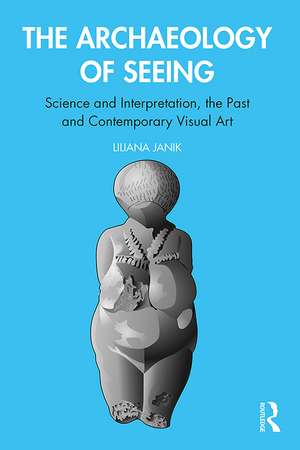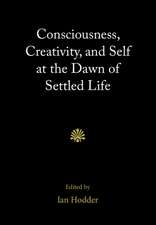Archaeology of Seeing: Science and Interpretation, the Past and the Contemporary Visual Art
Autor Liliana Janiken Limba Engleză Paperback – 5 feb 2020
The Archaeology of Seeing provides readers with a new and provocative understanding of material culture through exploring visual narratives captured in cave and rock art, sculpture, paintings, and more.
The engaging argument draws on current thinking in archaeology on how we can interpret the behaviour of people in the past through their use of material culture, and how this affects our understanding of how we create and see art in the present. Exploring themes of gender, identity and story-telling in visual material culture, this book forces a radical reassessment of how the ability to see makes us and our ancestors human; as such, it will interest lovers of both art and archaeology.
Illustrated with examples from around the world, from the earliest art from hundreds of thousands of years ago, to the contemporary art scene, including street art and advertising, Janik cogently argues that the human capacity for art, which we share with our most ancient ancestors and cousins, is rooted in our common neurophysiology. The ways in which our brains allow us to see is a common heritage that shapes the creative process; what changes, according to time and place, are the cultural contexts in which art is produced and consumed. The book argues for an innovative understanding of art through the interplay between the way the human brain works and the culturally specific creation and interpretation of meaning, making an important contribution to the debate on art/archaeology.
| Toate formatele și edițiile | Preț | Express |
|---|---|---|
| Paperback (1) | 296.51 lei 3-5 săpt. | +23.32 lei 7-13 zile |
| Taylor & Francis – 5 feb 2020 | 296.51 lei 3-5 săpt. | +23.32 lei 7-13 zile |
| Hardback (1) | 766.24 lei 6-8 săpt. | |
| Taylor & Francis – 14 feb 2020 | 766.24 lei 6-8 săpt. |
Preț: 296.51 lei
Nou
56.74€ • 59.24$ • 46.96£
Carte disponibilă
Livrare economică 15-29 martie
Livrare express 01-07 martie pentru 33.31 lei
Specificații
ISBN-10: 0367360225
Pagini: 252
Ilustrații: 1 Tables, black and white; 124 Halftones, black and white; 124 Illustrations, black and white
Dimensiuni: 156 x 234 x 19 mm
Greutate: 0.47 kg
Ediția:1
Editura: Taylor & Francis
Colecția Routledge
Locul publicării:Oxford, United Kingdom
Cuprins
1 How contemporary is prehistoric art?
2 The origins of art
3 The gallery: unveiling visual narrative
4 Power of display: the artist and the object
5 Embodiment and disembodiment: the corporality of visual art and interwoven landscapes
6 Portraiture and the reverence of the other
7 Conclusion
Notă biografică
Descriere
The Archaeology of Seeing provides readers with a new and provocative understanding of material culture through exploring visual narratives captured in cave and rock art, sculpture, paintings, and more.
The engaging argument draws on current thinking in archaeology on how we can interpret the behaviour of people in the past through their use of material culture, and how this affects our understanding of how we create and see art in the present. Exploring themes of gender, identity and story-telling in visual material culture, this book forces a radical reassessment of how the ability to see makes us and our ancestors human; as such, it will interest lovers of both art and archaeology.
Illustrated with examples from around the world, from the earliest art from hundreds of thousands of years ago, to the contemporary art scene, including street art and advertising, Janik cogently argues that the human capacity for art, which we share with our most ancient ancestors and cousins, is rooted in our common neurophysiology. The ways in which our brains allow us to see is a common heritage that shapes the creative process; what changes, according to time and place, are the cultural contexts in which art is produced and consumed. The book argues for an innovative understanding of art through the interplay between the way the human brain works and the culturally specific creation and interpretation of meaning, making an important contribution to the debate on art/archaeology.

